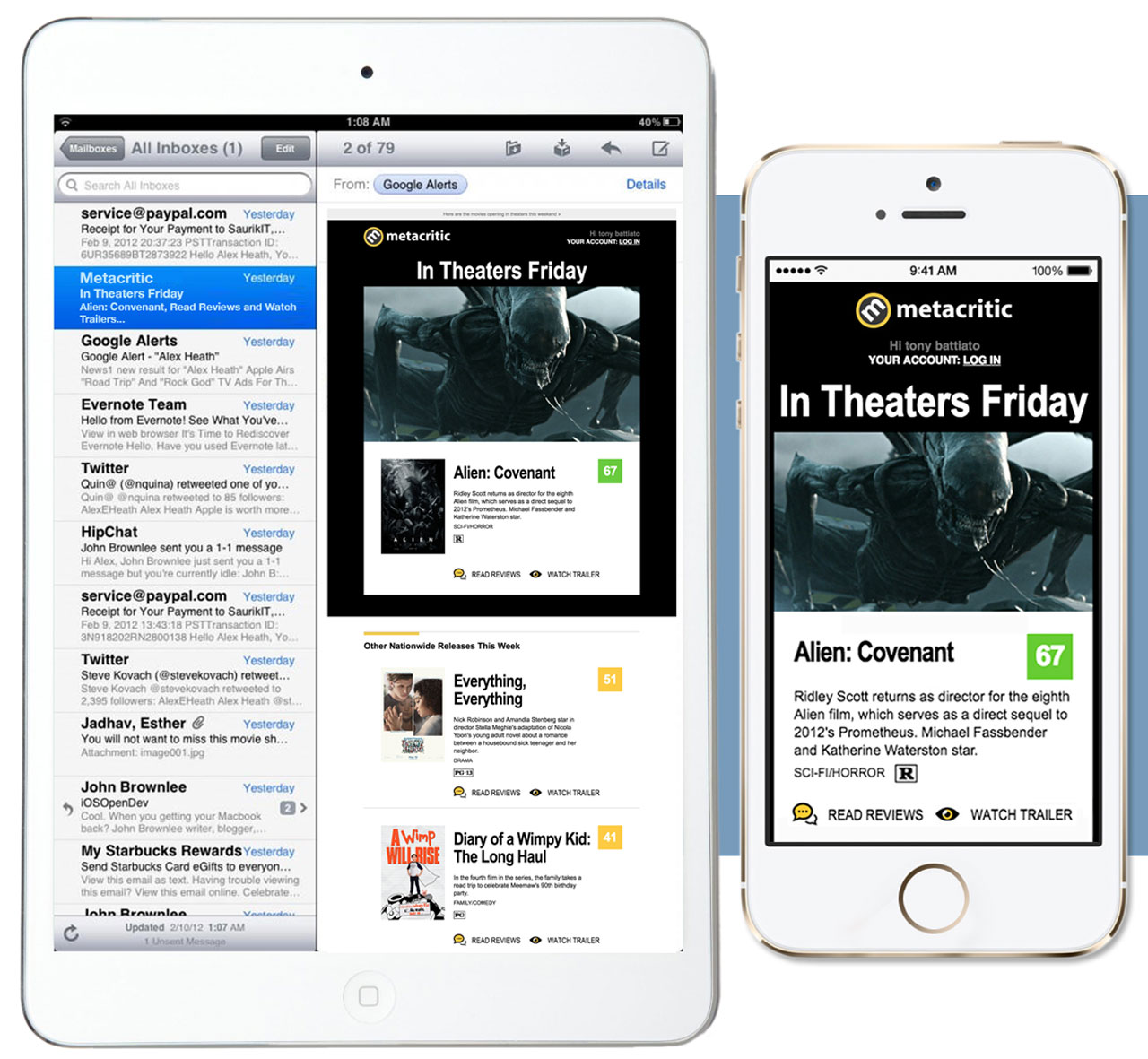
Stay connected with your audience like a pro with these 6 email best practices to boost your email success.
- Email Marketing Software
- Email Subscriber List Best Practices
- How to Design an Email
- Elements of the Email Message
- Email Marketing Metrics and Testing
- Email Marketing Errors
When a recipient opens your email, they should immediately sense high-quality, engaging content from your brand. A well-designed email is key to creating an instant impression of quality.
Make it a responsive

Good Examples of Audience Engaging Emails
SCROLL OVER IMAGE to view full email screenshot.
Metacritic designed and coded by Tony Battiato.
Each week the movies, data, rating system would self populate from clients database.
SCROLL OVER IMAGE to view full email screenshot.

Columbia email campaign coded by Tony Battiato
Each week several sales and audience targeted campaigns dropped in email boxes.
SCROLL OVER IMAGE to view full email screenshot.

6 Email Best Practices
Email Marketing Software
When you’re ready to start or improve your email marketing, best practices serve as your roadmap. By understanding the landscape, you can navigate around pitfalls and accelerate your journey toward success. In short, you’ll be equipped to develop a comprehensive email marketing strategy.
No matter how well-crafted your strategy, the right tools are essential. Standard email clients like Gmail or Yahoo Mail fall short for business communication—they lack crucial metrics like opens, bounces, and click-through rates, and they can’t handle the scale of sending thousands or even millions of emails. Moreover, these clients don’t comply with email marketing laws such as CAN-SPAM in the U.S., GDPR in Europe, CASL in Canada, and CCPA in California, making them unsuitable for managing mailing lists.
There are many email marketing tools and providers available. If you have a small list, you can start with a free account. As your list grows, you can upgrade to a more robust plan that meets your needs.
Email Subscriber List Best Practices
Building an email subscriber list in your software is usually straightforward, often requiring just a few clicks and a descriptive title. However, the real challenge lies in growing, segmenting, and maintaining your lists.
Focus on growing your email list organically by targeting leads who are genuinely interested in your brand. Utilize tools like Facebook’s demographic research to identify potential subscribers. Offering incentives such as contests, loyalty programs, or free webinars can encourage sign-ups.
To deliver content that’s most relevant to your subscribers, segment your list based on demographics, interests, geographic location, or other relevant factors. Then, use your email marketing software to create drip campaigns and automate messaging for these segments.
How to Design an Email
When a recipient opens your email, they should immediately recognize they’re about to receive high-quality, engaging content from your brand. A well-designed email creates an instant impression of quality.
Start with a flexible email template that ensures consistency across your messages. A key best practice is to choose a responsive template, so your content displays correctly on desktops, mobile devices, and everything in between. Responsive design is crucial since subscribers often switch between devices when checking their email. They expect your message to display properly, regardless of the device. Your email engagement rates hinge on how easily your messages can be read and navigated, making responsive design vital.
Color choices play a critical role in visual appeal and guiding your readers’ eyes to key elements of your message. Align colors with your branding, but also be strategic. Use contrasting colors to highlight buttons and clickable text. If you don’t have a graphic designer, your email templates can help ensure your designs are both visually interesting and easy to read.
Finally, ensure all images in your email are accessible to your entire audience by adding descriptive alt text. This not only helps visually impaired subscribers but also ensures your message remains clear even if the images don’t load.
Elements of the Email Message
There are countless reasons a user might decide to open your carefully crafted email. Maybe they’re sipping coffee and browsing for something interesting, or perhaps they’re rushing to find an important message from a client. While we can’t control their circumstances, we can structure your email to maximize its chances of being read.
Create a Great Email Subject Lines
Once your message reaches an inbox, the subject line must entice the recipient to open it. Most marketers recommend keeping subject lines around 50 characters for maximum impact. Create urgency by adding a time frame, or spark curiosity by asking a question. Personalize the subject line with the subscriber’s name, and consider using a relevant emoji to stand out—if it suits your audience. Remember to conduct A/B testing to determine which subject lines perform best.
Make it Feel Personal
Including a recipient’s name in the subject or body of an email is a good start toward personalization, but it’s usually not enough. To truly engage your audience, create dynamic email content that aligns with their interests and stage in the sales funnel. Don’t forget you can add a little punch or visuals to their inbox with emojis.
Create Interesting “Short” Copy
The content of your email is where you focus on your message. Whether you’re promoting a sale, educating your audience, or encouraging reviews, use clear and compelling language. Keep your copy concise, relevant, and easy to scan. By following these email content best practices, you’ll enhance the effectiveness of your campaign and deliver valuable, high-quality content that your subscribers will appreciate.
Add Images and Call To Action
IMAGES: The human brain processes images faster than text and can evoke emotions and spark imagination. Including images in your emails can help convey your message more quickly. However, some recipients may have their email clients set to block images or may see text-only versions. Ensure that images enhance, rather than replace, your copy, and always use alt text to describe the content of your images. An email that relies heavily on images without alt text provides no information if a recipient’s email client has images turned off.
CALL TO ACTION: A key best practice in email marketing is to ensure every campaign has a clear strategic purpose. Each email should have a specific job, whether it’s to inform, entertain, or drive a purchase. Typically, this involves prompting recipients to click through to a landing page on your website. Include a prominent call to action (CTA) that stands out visually and clearly communicates the desired action. While additional links can be included, ensure your primary CTA captures the most attention.
Metrics and Testing
To assess the success of your campaigns, ensure your email marketing software tracks at least these key metrics:
- Open rate
- Click rate
- Click to open rate (CTOR)
- Bounce rate
- Delivery rate
- Spam percentage and complaint rate
- Unsubscribe number and rate
Once you have a baseline for your key email metrics, begin experimenting with different elements to see what improves your results. The most effective way to discover what works best is through A/B testing. This involves creating two versions of the same email campaign, each differing by just one element. Send Version A to one half of your audience and Version B to the other half, then compare their performance.
A/B testing is most effective when you change only one variable at a time. Be patient, track your insights, and remember that each test brings you closer to optimizing your emails.
Enclosing
Email marketing is just one of your brand’s touchpoints. While it’s important to engage your audience, avoid overwhelming them with too many emails, as this can negatively impact their perception of your brand. Use A/B testing to determine the optimal frequency and timing for your emails, rather than sending them 3, 4, or even 5 times a week, which can lead to losing subscribers. Treat your subscribers as you would like to be treated and always align your email content with your Positioning Statement and Mission Statement to stay true to your brand.
Let’s get that campaign going
